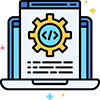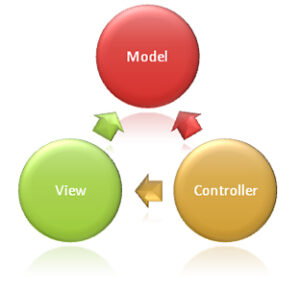What is a Web Application Framework

Web Application Framework
 A web application framework enables developers to build and run applications for the web without having to write all the code from scratch. You can think of a framework as a software library that makes app development a faster and more intuitive process for both developers and their clients. Read on to learn more about the different types of web applications and their benefits.
A web application framework enables developers to build and run applications for the web without having to write all the code from scratch. You can think of a framework as a software library that makes app development a faster and more intuitive process for both developers and their clients. Read on to learn more about the different types of web applications and their benefits.
Types of Web Application Frameworks
Depending on the project they are working on, developers today can choose one framework from a variety of web application frameworks. Or they can combine the functionality of several frameworks.
Web application frameworks fall into two large categories based on the functions that they are providing: front-end (client-side) frameworks and back-end (server-side) frameworks.
Back-end Frameworks
Back-end or server-side frameworks handle the internal part of a website or web app including core application logic, database management, URL mapping, or HTTP requests.
All this sounds technical and it is, but these processes are essential for a web app to provide functionality to users. Widely used back-end frameworks or libraries include Ruby on Rails, Django, or the .NET Framework.
Front-end Frameworks
Front-end frameworks handle the part of the website or application that the users see—the interface of the app as displayed within their web browser.
This interface may include animations and other dynamic elements that don’t require a page reload, as in a single page application (SPA). Front-end frameworks are often written in JavaScript and include Angular, React, and Vue.
The Model-View-Control Architecture
Modern web frameworks are generally based on the Model-View-Controller architecture which separates the interface from the logic of the app. It’s the integration of these separate elements that create the functional app. Let’s take a quick look at each of these elements.

- Model – The Model receives input data from the Controller and determines what the View should display next. This element includes web app logic, data, and functions.
- View – The View sends and receives information to and from the Controller and rebuilds itself following instructions from the Model. As you can tell from the name, the View is the front end of the app where data is represented visually.
- Controller – The controller acts as the intermediary between the View and the Model, receiving input from the View and communicating with the Model or the View depending on the data it receives.
Why Do We Use Web Application Frameworks?
At first glance, web application frameworks may look complicated. But in the right hands, they speed up app development times by reducing repetitive work and allowing multiple developers to collaborate more effectively.
Writing code for an app can be a time-consuming, repetitive process. Web application frameworks provide patterns and shortcuts in the form of bits of software that developers can reuse as needed.
More than saving time, developers can reduce repetitive work to focus on creating a better, more polished app.
That’s why web frameworks are also called libraries—they provide the resources developers need to build an app.
Benefits of Using a Web Application Framework
We’ve already seen that web application frameworks help developers save time. But what else can they do?
- More Efficient Development – Web frameworks provide developers with ready-made functions they can use instead of writing all the code themselves. It allows them to work more productively whether we’re talking about a small project or a large, ongoing one.
- Security and Support – Popular frameworks are open-source and backed by active communities of developers who find bugs and provide support to other developers. In this way, security problems are more easily found and addressed.
- Reduce Costs – Because most web frameworks are free and because developers save time using them, the final cost of developing a web app using a framework is lower compared to coding the app from scratch.
It’s in no small measure due to web frameworks that building web apps has become easier than ever—so much so that even small businesses and organizations can afford to create and maintain an app.
Final Thoughts
Web frameworks don’t magically create apps, but they provide developers with a useful toolkit that helps them get the work done faster—and often, avoid errors and other security problems. No wonder then that frameworks are so widely used today.
Contact AppsDeveloped.com
Do you have a need for a business application, or just have more questions on application development. We’re here to help you out! Please feel free to contact us using our contact form or if you prefer call us directly now at (888) 750-8860.
